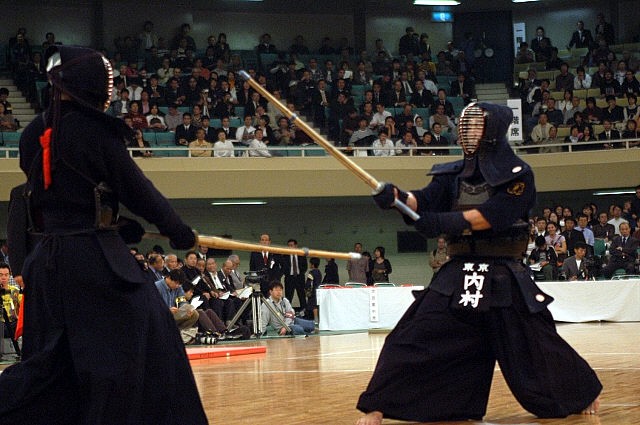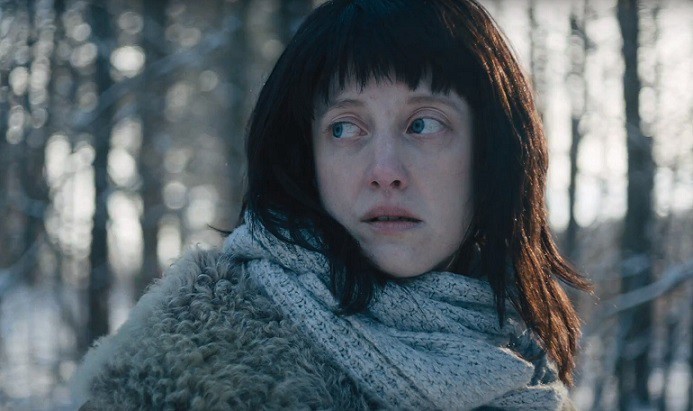My
first experience in “keiko,” or fight practice in kendo, the Japanese art of
sword play, was over 20 years ago. Confronted with an experienced player’s bamboo sword, I was taken aback by the intimacy of the relationship even under under the gorgeous thick blue cotton
uniform and the armor (including metal head gear). I felt suddenly “unmasked.” Face to face with an opponent, it was immediate and
real. To strike or be struck. It’s easy to want to
escape, or, conversely, to attack. The practice trains you to shift your focus
to instead to “kiai,” a primal shout to overcome your fears, look for an
opening, and simply move forward towards it.
Years
of practice later, I went with the New York City Kendo Club Team to the First
International Women’s Kendo Tournament in Japan. Everything was new and
unfamiliar: the sprawling city of Tokyo, the language I didn’t speak, the
gymnasium with 800 Japanese women. And not surprisingly, the women were
strong, with swords and “kiai.” It was a little intimidating, but also thrilling
to be in room full of women acting with tremendous conviction despite fear,
doubt, surprise or anger — all of which arise. In other words, to discover what being a “warrior” means: to find the courage to continue despite
adversity.
As
I began to understand this as a metaphor for every situation I encountered in
life, I also realized just how rich a psychological vocabulary the dramatic
play between swords and bodies in kendo are — and how cinematic. The intense eye
contact, the tense silence, the bursts of energy, bodies bumping up against each
other, the breathing. I set out to write and direct a film to capture all this.
There are not a lot of films dealing with kendo, too few that show women as practitioners, and perhaps none set in the modern world from a woman’s perspective in the English language. While paying
homage to the inspiring virtuosic Asian swordplay genre, my dramatic feature When Night Turns To Day is different. It’s
really about practice as a way for growth and self-discovery through the non-violent philosophy of Bushido and Zen.
Set
in present-day New York City, an American woman writer and a Japanese kendo player jump into marriage and struggle with the conflicts of real emotional
attachment, independence, and love. They turn to kendo to help them channel
their wildest impulses and search for the “inner strength” to fight for the
lives they imagined. My hope is that audiences will emotionally relate to
the ambivalences, misunderstandings, and unnameable feelings that arise — between men and women, Japanese and American, in fact between any two people,
in any relationship. And that for each person, strength means to commit to your
vision in a concrete way to create your life.
That
lesson, reinforced in a refrain repeated often in kendo — “’Gambatte!’
Keep going, with fighting spirit” — has proven to be an invaluable trait to
getting a feature film made. It seemed insurmountable at first to make those initial phone calls.
To approach a well known actor, without a casting director. To find a casting
director to get on board with the project. Or worst of all — to lead a crowd
sourcing campaign. I was terrified to ask for money and afraid everyone would
think, “Another Indiegogo campaign? Ugh!”
Yet,
with the ‘fighting spirit’ of kendo, I’ve been able to leave no stone unturned,
and move forward step by step. I’m discovering it’s not so much about raising money as it is building
relationships. I’ve begun working with the very established casting director
Adrienne Stern, who in turn has helped find upcoming stars for the film, like our lead
Tanroh Ishida, a Noh- and Shakespearean-trained actor, who can now be seen in
theatres in The Railway Man.
What’s
more, I’ve already started collaborating with Sword Master Kataoka Noboru on
the choreography and directing scenes with cinematographer Jason Beasely. And
suddenly, the film is beginning to feel like it’s coming into existence. Right
now we’re auditioning the lead female role, and once we cast the right actress, we’ll
shoot an enticing teaser with the two leads, in New York and Japan, to give a
sense of the direction of the film to producers and investors.
I
never thought I’d have to pick up a sword to get a film made, but by shouting a
silent “Kiai” every time I pick up the phone, fear has turned to excitement
about the many more steps ahead of us.
Check out director Amy Guggenheim’s IndieGogo campaign for When Night Turns to Day here.







